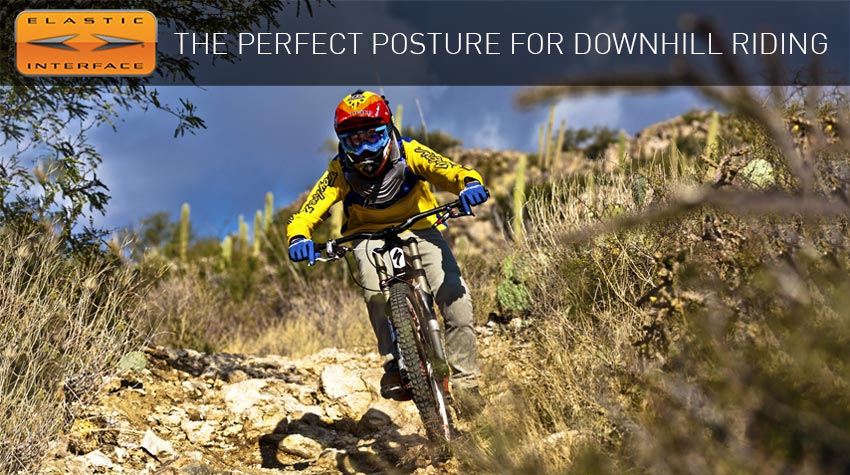
The perfect posture for downhill riding
[ssbp]Mountain biking diversifies in a variety of disciplines that require different machines, accessories and clothing. In downhill, the cyclists ride down technical tracks strewn with obstacles, jumps, rocks and berms. Flat sections are rare and short. Most of the time the riders stand on the pedals, often out of the saddle. For this reason, a cycling pad might seem superfluous. However, let’s first consider the elements that constitute the perfect posture for downhill riding.
Key factors for the perfect downhill posture
The factors that contribute to a good posture are quite a few, starting from the position of the feet on the pedals. In downhill racing clipping-in pedals, or clipless, are most riders’ choice, together with specifically designed shoes and pedals. At the expense of the pedalling efficiency, cleats are moved slightly towards the centre of the feet: this allows for a nice balance while riding downhill, with no overload on the ligaments of the ankle. This position also provides for better ergonomics when it comes to bike ‘pumping’, i.e. transferring the body weight onto the pedals to generate speed. For bikepark riding and freeride, disciplines with a more recreational edge, dedicated shoes feature rubber soles designed to perfectly adhere to the pedals, that are usually of platform type, or flat, with small studs that are called pins. Pins are important because they grip the sole, providing better control over the bike. Either clipped-in or with flat pedals, a correct riding position requires low heels and relaxed ankles, to make better use of the centre of gravity and transfer the weight of the body over the cranks and the wheels. The second factor contributing to a perfect posture concerns the knees, that have to be slightly bent and shoulder-width apart. From this position, legs can stretch or bend depending on the situation, working just like additional suspension. To put weight over both wheels and give them more traction, the body maintains a central position, with the pelvis mainly above or just behind the saddle, except for very steep descents or in particular jumps. The torso is tilted forward, in many cases up to the point that the head is over the handlebar. Arms are bent with wide open elbows, while the look is always high and ahead of you.
The importance of a downhill-specific chamois
In downhill riding the body is never static. High cadence pedalling, weight shifts and repeated out-of-the-saddle follow one another. The contacts with the saddle are frequent and often abrupt, as after jump landings or due to shocks that are not completely absorbed. Therefore, a cycling pad that is specific to the downhill discipline is important to prevent abrasions and to alleviate the impacts the rider has to deal with. On a downhill bike, the machine optimized for descent riding, the saddle is often tilted up not to interfere with the movements of the rider and to be less dangerous in the event of a crash or an impact. As a consequence, during the brief moments you sit in the saddle, the position of the pelvis is always slightly backward: a good pad for downhill riding takes this posture into account introducing in the ischial area an additional protection without hindering your freedom of movement.
Quick-drying and high-quality of the chamois fabrics are two other fundamental elements contributing to the great comfort and long lasting performance of these cycling pads.
Discover here our MTB cycling pads!